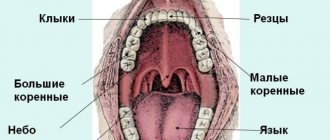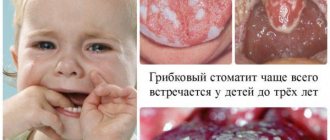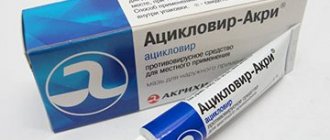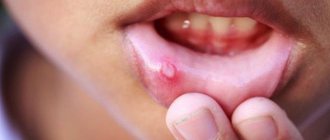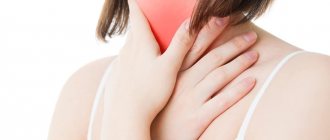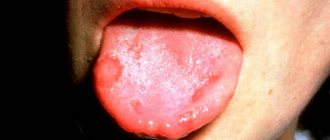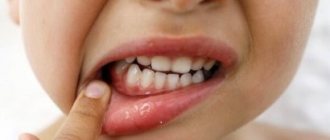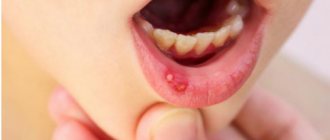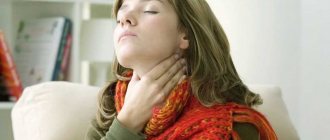April 5, 2020
Diathesis is not just an allergy, but a predisposition of the body to the occurrence of diseases and pathological reactions that manifest themselves mainly in childhood. This is a special condition accompanied by the child’s tendency to:
- to allergic reactions;
- frequent colds and respiratory infections;
- metabolic disorders;
- changes in immunological reactivity.
With diathesis, an inadequate response of the body to normal environmental influences (irritants) is observed. But such reactions occur with an unfavorable combination of several provoking factors: errors in nutrition, poor diet, improper care, frequent infections, etc.
The most common type of diathesis is exudative-catarrhal. It is this that manifests itself in the form of allergic dermatitis. The first signs appear as early as 3-6 months and can remain until 1-2 years, when in most children all symptoms of diathesis disappear.
The main signs that manifest exudative-catarrhal diathesis are:
- “gneiss” – peeling and seborrheic crusts on the scalp;
- redness, peeling and thickening of the skin of the cheeks (“milk scab”);
- itchy nodules (“strophulus”);
- diaper rash of large folds.
One of the methods of treating diathesis is local therapy.
The complex treatment of diathesis includes local therapy in the form of ointments and gels. They should only be prescribed by a specialist, and he takes this issue very seriously, since the main role in the appearance of signs of diathesis is given to allergens that affect the child’s skin.
What drugs are often included in the list prescribed by a doctor:
- To soften and quickly heal the skin: Bepanten, zinc ointment, Desitin (zinc-based ointment).
- For disinfection, softening and prevention of the formation of new crusts: Diaderm, Glutamol.
- To suppress an allergic reaction: Fenistil, Vibrocil, Cetrin.
It is worth considering that ointments are not the main way to treat diathesis, since they do not affect the cause in any way. Local therapy is used as an auxiliary method. The basis of treatment should be diet, proper care, and avoidance of contact with allergens.
Causes
Allergic rashes can occur in children from birth until the age of 7 years. This is explained by the fact that the immune system has not yet been formed. Below are the main causes of allergic reactions in children:
- Medicines, the body may react negatively to some components of medicines;
- Breast milk if the diet is not followed;
- Hygiene products and household chemicals;
- Plants and animals can also cause rashes;
- Ultra-violet rays;
- Various infections and diseases.
Hormonal ointments for diathesis
A special group of local drugs used for diathesis are hormonal ointments. They are used if non-hormonal drugs do not help. Hormonal drugs have a more serious composition, including hormonal components - glucocorticoids. These are steroid hormones synthesized by the adrenal cortex. The most common among them are:
- Natural glucocorticoids: cortisol, hydrocortisone. Their effect lasts for 8-12 hours.
- Synthetic analogues: prednisolone, prednisone, methylprednisolone, mometasone, clobetasol. The substances act within 12-36 hours.
- Synthetic analogues containing fluoride: dexamethasone, betamethasone, paramethasone, fluprednisolone. The effect of the substances lasts up to 3 days.
Such substances have the following effects:
- Antiallergic. Hormones reduce the level of basophils - substances activated during allergies.
- Anti-inflammatory. Substances reduce the level of inflammatory mediators in the blood.
Hormonal drugs have a faster effect, but also have a more impressive list of side effects. For this reason, few hormonal ointments are approved for children, and they try to resort to them in extreme cases, when the child’s condition is advanced and he suffers from itching, large lesions and other unpleasant symptoms.
The list of hormonal drugs used for diathesis includes:
- Advantan (methylprednisolone) – from 4 months;
- Lokoid (hydrocortisone) – from 6 months;
- Afloderm (alclomethasone) – from 6 months;
- Beloderm (betamethasone) – from 6 months
- Dermovate (clobetasol) – from 1 year;
- Elokol (mometasone furoate) – from 2 years.
What are the dangers of using hormonal ointments for diathesis?
Because children have a larger surface area to weight ratio than adults, they are at greater risk for side effects from hormonal medications. With long-term use there is a risk of growth and development disorders. For this reason, children are prescribed minimal doses of ointments, as well as short courses. For example, Advantan cannot be used for longer than 4 weeks.
There are other features of the use of hormonal ointments associated with the small surface area of the child’s body. For example, Beloderm ointment is used very carefully and should never be applied under a diaper, since due to the increased absorption of the active components, the risk of developing serious side effects increases.
It is equally important to apply hormonal ointment with caution in the area of body folds. In these places, the ointment is absorbed more actively and can have a systemic effect on the body, that is, enter the bloodstream and influence from the inside.
In the case of hormonal ointments, it is also important:
- do not exceed the prescribed dosage;
- use the amount of ointment prescribed by the specialist;
- do not extend the period of use (in most cases no longer than 5 days);
- Apply only to the affected areas.
Manifestations and stages
Cheilosis is a common inflammatory problem. When the lip tissue is damaged, signs such as increased dryness and redness, the development of wounds and ulcers, and pain appear. Often develops due to poor ecology, irritation caused by food or chemicals. In some cases, it is caused by other diseases, that is, it acts as a symptom.
The following types of lesions are observed in children:
- traumatic;
- exfoliative;
- contact;
- meteorological;
- grandular and angular cheilitis in children;
- microbial.
The traumatic form occurs due to mechanical, chemical and other influences, after which infection develops. Swelling appears, the mucous membrane becomes tense, and lip movements become limited. In some cases, this type of cheilitis is caused by herpes in the acute stage. For treatment, antibiotics, antiseptics or anti-inflammatory drugs are prescribed.
The exfoliative type of the disease is accompanied by increased dryness and peeling. The reason is a lack of vitamin B, ascorbic or nicotinic acid. The problem arises with dysfunction of the endocrine or nervous system, impaired lip closure, or mouth breathing. Therapy is prescribed depending on the cause of the lesion; multivitamins and softening creams are often used.
Allergic, or contact, cheilitis in most cases develops in adolescents. The causes are chemicals and other external factors. Manifestations of the disease include itching or burning, blisters on the surface, and dryness. To eliminate the problem, you need to avoid contact with the substance that caused the allergy and take antihistamines.
In addition, there are:
- atopic cheilitis in children, which is accompanied by peeling, swelling, erythema and edema;
- hypovitaminosis, characterized by cracks, soreness, the causes are bad habits, for example, frequent licking of lips;
- Eczematous cheilitis is not an independent disease, but one of the symptoms of an inflammatory process affecting the skin.
What to do if a child has diathesis
Local therapy using ointments is one of the components of complex treatment. But both hormonal and non-hormonal drugs should be prescribed by a doctor individually for each baby, taking into account the characteristics of the diathesis.
Self-medication in such a situation is not only ineffective, but also dangerous for the child’s health. Therefore, it is better to contact competent specialists. PsorMak employs doctors with extensive experience in treating diathesis.
We take a comprehensive approach to diagnosis and treatment, and for local therapy we use ointment made according to our own recipe without the addition of hormones.
She has been helping our patients at our clinic for more than 25 years, so we guarantee a complete cure without side effects. Contact us for a consultation so we can begin solving your problem. April 5, 2020
Author of the article: dermatologist Mak Vladimir Fedorovich
How to diagnose allergies?
An allergic rash in children is often confused with an infectious one. If the treatment is incorrect, then the consequences of such a therapeutic course will not be the best. Before choosing an effective remedy, you need to learn to distinguish one disease from another. Only a doctor can make an accurate diagnosis, since a visual examination is not always enough to determine the cause of the disease; tests are required.
| Features | Allergic rash | Infection |
| General form | It can be in the form of both small dots and large blisters. In addition to them, there are often crusts, erosions and serous wells (ulcers from which fluid oozes). | The rashes are pinpoint and do not “merge” into a large spot. |
| Place of appearance | Face (forehead, cheeks, chin). Neck, arms, legs, buttocks. Rarely – stomach, back. | Belly, back. Rarely – arms, legs. Very rarely - forehead. |
| Heat | The temperature is rare, and if it rises, it is not higher than 37-38°C. | The disease is accompanied by fever, from 37°C to 41°C. |
| Itching | Happens. | Happens. |
| Swelling | Well visible. In some situations it is life-threatening. | They happen very rarely. |
| Associated symptoms | Lacrimation, conjunctivitis, hyperemia of the mucous membrane of the eye, decreased blood pressure, cough, upset stomach. | Running nose, general loss of strength, body aches. |
| How quickly it goes | Often the rash goes away immediately after taking the medicine. | Remains until the course of treatment is completed. |
Treatment with drugs depends on the cause of the rash
A rash around a child’s mouth is treated taking into account the cause that caused it. There is no universal remedy that would help in all cases.
Some measures help prevent the development of the disorder:
- compliance with hygiene rules;
- early contact with a doctor;
- for dry skin, you need to use nourishing creams;
- before going outside during the cold period, you need to apply a protective cream;
- use only children's clothing and body care products;
- reduce the time a child spends outdoors in the open sun in summer.
Therapy for the disorder must be comprehensive. These are local and systemic remedies. At all stages of treatment, it is necessary to monitor whether the patient’s condition improves. Once the type of pathogen is determined, etiological treatment is prescribed. It involves antibacterial or antiviral treatment that is active against this pathogen.
In most cases, physiotherapy methods are included in therapy. They help improve local blood flow and have an anti-inflammatory effect. The possibility of using alternative medicine should be checked with a doctor.
Neonatal acne in newborns
Newborns include children up to 28 days of life. Some mothers notice irritation on the baby's skin during this period, which makes them worry. This condition is typical for 20-30% of children and refers to physiological phenomena.
A rash around a child’s mouth is a consequence of hormonal changes in the body, which begins to live independently.
The second reason for the phenomenon is the proliferation of yeast-like fungi on the surface of the body, which need sebum for nutrition. Externally, it is not difficult to determine that this is acne of the perinatal period. The elements are pointed, with a white shaft in the center. The contents of the vesicle are viscous, which distinguishes clear discharge from herpes infection or dermatitis.
Unlike other causes of its appearance, newborn acne migrates over the face and neck and is not typical for other parts of the body, as with urticaria and miliaria. In addition, there are no signs of intoxication, which would indicate an infectious process.
Prevention of streptoderma
To reduce the likelihood of developing streptoderma in a child, follow the rules of prevention:
- observe the rules of hygiene;
- treat skin lesions with antiseptics;
- strengthen your immune system with vitamin complexes and good nutrition;
- do not wash your child with soap too often;
- At the first symptoms of any disease, consult your doctor.
Streptoderma is a curable disease, but you need to see a doctor in time. The sooner treatment is started, the easier it is to avoid complications and transition to a chronic form. You can undergo a qualitative examination of your skin condition at the SM-Doctor clinic. Qualified pediatric dermatologists will make the correct diagnosis and prescribe the correct treatment.
How to avoid allergies in children?
Preventive measures will prevent the child from developing an allergic rash. Doctors give the following recommendations:
- Make sure that the baby does not come into contact with the allergen (remove allergenic foods from his diet; if necessary, change baby powder, soap or dishwashing liquid.
- Maintain order in his room, regularly do wet cleaning.
- If there are pets in the house, keep them clean.
- Strengthen the baby’s immunity (walk more often, play sports).
- Do not violate your doctor’s recommendations for taking medications.
Causes of complications and re-infection
The reason for re-infection may be incorrect therapy when, for example, if you have primary criteria for improvement, you decide to stop therapy. The most important thing is to remember that you need to unquestioningly follow the advice and instructions of your doctor.
streptoderma complications
What does the color and type of rash indicate?
All types of rash are different. Therefore, the external manifestations of the elements can tell the doctor a lot. A pinpoint rash often indicates an infectious process and intoxication. If it is filled with fluid, it is caused by the herpes virus.
When the rash is detected only in one place, the cause is most often local in nature . If elements appear on the back, arms, neck, then the matter is in internal processes.
Based on the appearance of the manifestations, one can suspect the cause of the phenomenon:
| Disease | Appearance of the rash |
| Perinatal acne | Small elements with a white rod inside. Contents viscous |
| Atopic dermatitis | The elements merge with each other, the surface of the skin is red and peeling |
| Herpes | Bubbles of different sizes, filled with clear liquid |
| Allergy | Elements rise above the surface of the skin, the skin around is red, there is no content inside |
| Weathering | Characterized by redness of the skin, areas of peeling and itching |
| Worm infestation | The rash is pinpoint, elements without content, appear in the area of the nasolabial triangle, neck |
| Perioral dermatitis | At first, the elements are located separately, then merge with each other, pus appears, wet areas appear, the surface peels off |
When redness and peeling are observed, this is a sign of the allergic nature of the disorder. If the affected area is large, the specialist suspects toxic erythema. The purulent contents of the vesicle indicate infection, a bacterial complication.
Regardless of the type of rash, they occur on initially intact skin. The intensity and location of the process determine the type of elements. Each characterizes a disruption in the functioning of the entire organism.
Herpes
Decreased immunity can be caused by viral and bacterial infections. Often a sign of unstable functioning of the protective system is a herpetic rash. These are small elements with watery contents. The appearance of herpetic elements in an infant is a very unfavorable sign.
As a rule, infection occurs through direct contact with close relatives during an exacerbation period.
Since immunity is just being formed, innate immunity and protective factors contained in breast milk protect for up to 6 months, herpetic eruptions may indicate congenital pathologies with an immunosuppressive effect.
An exacerbation of the infection is typical after the age of 3 years , when the child begins to visit kindergartens, come into contact with various bacteria and viruses, and enters the social sphere.
Atopic dermatitis or infantile eczema
Atopic dermatitis is a reaction to hazardous foods. Redness can occur on the body in the chest area, arms and neck. If the allergen is not excluded, the elements open up, begin to get wet, and the skin becomes very itchy.
Five foods that cause atopic dermatitis
Genes responsible for predisposition to the development of the disease have been identified. But it can be realized only with an initially low state of immunity. Often, manifestations of pathology begin under the influence of a stress factor. If there are inflammatory skin diseases, traumatic injuries, then this is the entrance gate for infection and allergens.
The cause of the development of dermatitis can be food, respiratory antigens, or the body’s reaction to long-term use of antibiotics.
Tips for proper treatment of atopic dermatitis:
Therapy and drugs
Throughout the spread of the disease, basic hygiene rules should be observed: in the first days, it is forbidden to take baths and wet impetigo, and it is forbidden to comb the affected areas.
Therapy for this disease is aimed at destroying the pathogen and strengthening the protective functions of the immune system. As a complex treatment, antibacterial drugs of the category of cephalosporins, macrolides and penicillins are prescribed. If you have bullous streptoderma, you should stop taking medications. As an immunocorrective treatment, the drugs “Likopida”, “Amiksin” and their analogues are effective. Treatment with drugs for . Restoration of microflora in the intestines occurs with the help of probiotics and prebiotics. Appropriate antihistamines will help get rid of scabies.
Means that increase the body’s resistance to infections in the form of solutions - “Eleutherococcus”, “Echinacea”, “Leuzea”, etc.
Sets of vitamin nutrients should also be taken in accordance with the instructions.
Local treatment includes antiseptic drugs that prevent the spread of putrefactive bacteria. Such medications include various alcohols, brilliant green, as well as their analogues - “Fukartsin”, “Chlorhexidine”, “Miramistin”, “Rivanol” or the cauterizing agent “Resorcinol”.
The use of a huge number of zinc-based pastes, preparations and ointments for streptoderma in children with intense scabies.
